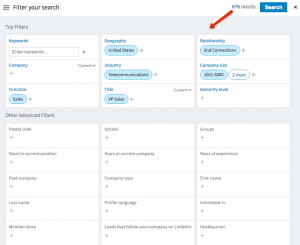LinkedIn reports the recruiting metric hiring managers care about most is quality of hire.
Basically, what we all want to know is: is my recruiting process actually selecting the right people or not?
Luckily, advances in recruiting software and recruitment tech are helping recruiters use data to close the loop with hiring managers to demonstrate candidates’ quality of hire.
Here’s how to measure the quality of your candidates and link it to business outcomes in 6 steps.
Step 1: Collecting quality of hire metrics
Generally, there is no “one-size-fits-all” metric because it depends on what your priority is.
LinkedIn reports the top three ways quality of hire is measured are:
- Retention: the length of time new hires stay at the company (e.g., measured as a rate of new hires staying vs. new hires leaving)
- Time to fill: the time it takes to fill a job posting (e.g., measured by the number of days taken)
- Hiring satisfaction: the satisfaction of the hiring managers (e.g., measured by how satisfied they are with the new hire from 0-10)
Other common metrics include:
- Time-to-productivity: the employee’s time to full productivity (i.e., ramp-up time)
- Job performance: measured by supervisors’ performance ratings or objective data like sales
- Employee engagement: measured by the new hire’s self-ratings
- Cultural fit: measured by 360 ratings of the new hire’s colleagues and supervisors
Step 2: Measuring the quality of hire of an individual employee
If you want to calculate a quality score for an individual employee, it might look something like this:
- (job performance + time-to-productivity + employee engagement + cultural fit) / 4
An important detail here is to make sure all your measurements are using the same scale (e.g., all scores out of 10, all scores out of 100).
Step 3: Measuring the average quality of hire of all new employees
Calculating an average quality of hire score of all new employees:
- (sum of the quality of hire scores for all new hires) / (# of new hires)
Step 4: Measuring the quality of hire of a specific recruiting practice
To measure the success of specific recruiting practices to each other, you can compare their relative quality of hire scores. For example, you might want to know how well your automated resume screening software identifies qualified candidate.
To do this, compare the quality scores of the employees hired using automated resume screening to the scores of the employees hired not using this method.
Step 5: Measuring the overall quality of hire of your recruiting process
To measure how successful your recruiting process is in general, calculate the average of the quality of hire score of all hires and the retention rate.
The formula for calculating new hire retention is:
- (# of new hires who remained employed for the time period) / (# of new hires at start of time period) x 100
The Bureau of Labor Statistics reports the annual retention rate for high-volume roles such as retail is approximately 50% (i.e., a 50% turnover rate).
When the average cost to replace an entry-level employee is estimated to be $ 3400, high turnover gets costly quickly.

As an example, if Walmart replaced 50% of their 500,000 entry-level employees in an year, it would cost them approximately $ 850,000,000!
The formula for calculating the quality of hire of your recruiting process including retention is:
- (average quality of hire score for all new hires + retention) / 2
Again, make sure your measurements are using the same scale (in this case, both measurements should be out of 100).
Step 6: Linking quality of hire to business outcomes
With the advent of real-time feedback, employee engagement, and performance surveys, collecting the data you need to measure quality of hire has become the relatively easy part.
The harder part is linking your quality metrics with business outcomes such as reduced costs, increased revenues, and other company goals.
Reduced costs
Increasing quality of hire by increasing retention can easily be linked to reduced costs. According to SHRM’s data, the average cost per hire is $ 4,129.
Using your company’s cost per hire and its retention rate, you can calculate how much you’ve reduced turnover costs for every percentage you increase in retention:
- (cost per hire) x (# of new hires) / (retention rate)
Increased revenues
Top performers contribute disproportionately more to a company’s productivity: research has found a top employee generates 4x the output of an average employee.

If you’re able to find out what the revenue generated per employee at your company is, you can attach a monetary value to each high quality employee you’ve recruited:
- (revenue generated per employee) x 4
Summary: How To Measure Quality Of Hire In 6 Steps
Measuring quality of hire and linking it to business outcomes are essential for recruiting departments to demonstrate their financial and strategic value.
Quality of hire can be measured using several metrics including:
- Retention
- Time to fill
- Hiring satisfaction
- Time-to-productivity
- Job performance
- Employee engagement
- Cultural fit
Using these metrics, you can calculate various quality of hire measures:
- Quality of an individual employee
- Average quality of all new employees
- Quality of a specific recruiting practice
- Overall quality of your recruiting process
Once you’ve calculated quality of hire, you can link it to business outcomes such as:
- Reduced costs related to decreased turnover
- Increased revenue related to hiring top performers
(245)
Report Post






